I’ve edited this story as of 21/7/2012.
Here’s an interesting story from the BBC yesterday. It reports:
Windscreen wiper water may be the cause of 20% of cases of Legionnaires’ Disease in England and Wales, the Health Protection Agency says.
…adding screen-wash kills the bacteria and could save lives, the Agency advised.
I think it is important to put it in perspective and look at the HPA (Health Protection Agency) report. It says:
A preliminary HPA study, published in the European Journal of Epidemiology, has found an association between not using screen wash in wiper fluid and the risk of contracting Legionnaires’ disease.
Further studies are now required to further explore this finding, and to determine whether the use of screen wash in wiper fluid could play a role in preventing this disease. The HPA is exploring ways of taking this forward with partner organisations.
 Note the word ‘preliminary’. The BBC hasn’t. And also note the fact that it is only as a result of looking at the lifestyles of 75 patients who contracted Legionnaire’s. Definitely something worth looking into, but not conclusive at this stage by any means.
Note the word ‘preliminary’. The BBC hasn’t. And also note the fact that it is only as a result of looking at the lifestyles of 75 patients who contracted Legionnaire’s. Definitely something worth looking into, but not conclusive at this stage by any means.
I’ve always used screen-wash in my car – not because of Legionnaire’s Disease, but because if you don’t you can’t bloody see properly. But it makes you think. When I was younger I used to just use water sometimes, and during summer the nozzles would block up with algae!
I can remember having to poke out the nozzles and digging out green stuff, but this was back in the days of cars you could service yourself without having to spend a fortune on parts.
Mind you, the cold weather over the 2009 and 2010 winters has also had a bit of a shout about how much screen-wash I use, because it also acts as an antifreeze, and I hate it when my nozzles freeze up. I used to use something called Clearalex, which you can get in bulk on eBay (or get ripped off by the sachet for elsewhere), but I found it left white streaks when it dried. Nowadays I make my own using concentrated suractants and isopropyl alcohol.
For big insect splats, I used to use Tar & Insect Remover from Wilkinsons – which they used to sell for 49p for a 750ml hand spray. Again, I now make my own. For the inside (general cleaning – not insect splats), I use my own formula detergent, white vinegar, or Autoglym Fast Glass, as required.
EDIT 16/06/2010: This story is being picked up on the various forums where – as we know – experts on every subject on earth reside (i.e. every ADI is an expert on every subject).
…makes you think doesnt (sic) it, is it just a ploy from the manufacturers to get you to buy windscreen wash fluid.
I have never Heard such scaremongering tactics ever. Legionnaire`s disease from car screen wash whatever next. I use water On its own does the job for me.
It [legionnaires] lives in the bacteria of stale water.
I will not be adding screen wash fluid because of some scaremongering. I once heard a news report entitled the dangers of your shower head. complete rubbish in my opinion I will take my chances and just use water I am not paying for something I don`t need Or want.
I tell You what I will not wash my windscreen now due to the worry of getting legionnaire`s disease I will drive around with is so dirty In cannot see through it. that should be safer
I smell “screenwash” marketers about
tap water in the uk has chorides (sic) in it to prevent it from going stagnant. in a closed system like a car screen wash, it would take months for the stuff to evaporate off to a level that would allow bacteria to breed.
I’ve said many times before that a little knowledge is a dangerous thing (and many driving instructors sure do have very little knowledge of the subjects they think they’re experts in) – but the guy in green wins the award for having literally no knowledge and no sense.
As the HPA said in its article:
Legionnaires’ disease, caused by the legionella bacteria, is commonly linked to water systems such as air conditioning units, showers and fountains, where water is given off in a fine spray.
In another article, unconnected with the findings concerning car washer bottles, it explains:
The majority of cases are reported as single (isolated) cases but outbreaks can occur. All ages can be affected but the disease mainly affects people over 50 years of age, and generally men more than women. Smokers and the immunocompromised are at a higher risk…
The bacteria are widely distributed in the environment. They can live in all types of water including both natural sources such as rivers and streams, and artificial water sources such as water towers associated with cooling systems, hot and cold water systems and spa pools. They only become a risk to health when the temperature allows the legionellae to grow rapidly, such as in water systems which are not properly designed, installed and/or maintained.
Control and prevention of the disease is through treatment of the source of the infection, i.e. by treating the contaminated water systems, and good design and maintenance to prevent growth in the first place.
So, the bacteria are there all the time. The disease isn’t easily caught, and it isn’t easily spread – it needs certain conditions to trigger an outbreak, and it is certain vulnerable groups who usually succumb.
The original study was reported in the European Journal Of Epidemiology. Not the Screen-wash Manufacturers’ Weekly.
FACT: They DID find the bug in some car wash bottles. There IS an apparent skew in cases of the disease towards those who are professional drivers. But ADIs know best, eh?
EDIT 22/06/2010: Better late than never, the Daily Mail has now picked up the story.
The water in windscreen wash bottles might seem innocuous enough – but in fact it’s linked to about a fifth of cases of the deadly Legionnaires’ disease, the health Protection agency warned last week.
Mmmmm. I don’t think that’s quite what the HPA said, but it’s typical Mail reporting, i.e. “wrong”. But seeing as the HPA didn’t really say much other than that more studies were needed, the Mail saw a burning need to fill out the issue with some scaremongering about other diseases.
It lays into warm-air hand dryers, shower heads, mobile phones…
…mobiles harbour more bacteria than a lavatory seat, the sole of a shoe or a door handle…
…communion cups, childrens’ sandpits, make-up testers, and ATM machines (cashpoints)…
Little wonder that ATMs are one of the biggest culprits for leaving you bed-bound.
What the Mail fails to understand is that everything is contaminated to some extent. Just because someone comes out and says it doesn’t change anything.
EDIT 08/07/2010: Someone found this post on the search term “car air conditioning and legionnaires”.
There’s no suggestion that car air-conditioning has anything at all to do with this. All the aircon does is blows air through a sealed heat exchanger which has a refrigerant running through it. Hot air goes in, cold air comes out.
There is a by product of this, and that is condensed moisture from the warm air drips down on to the road (look at how much water pools under there if you park with the engine running and the aircon on).
I think people might be getting confused with the water cooling towers which are used in aircon systems in buildings. These can be a major problem in outbreaks of legionnaires. The aircon in your car is similar to the one which powers your refrigerator at home, and is nothing like the ones in large buildings.
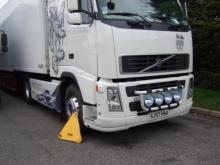
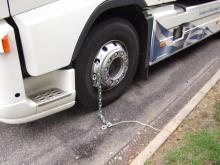


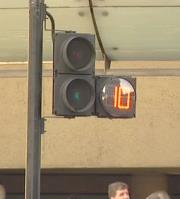
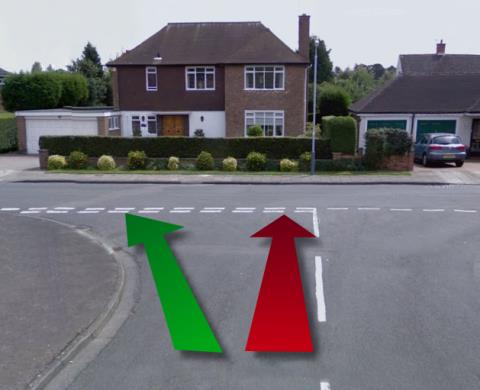
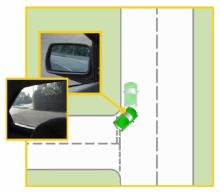
 Note the word ‘preliminary’. The BBC hasn’t. And also note the fact that it is only as a result of looking at the lifestyles of 75 patients who contracted Legionnaire’s. Definitely something worth looking into, but not conclusive at this stage by any means.
Note the word ‘preliminary’. The BBC hasn’t. And also note the fact that it is only as a result of looking at the lifestyles of 75 patients who contracted Legionnaire’s. Definitely something worth looking into, but not conclusive at this stage by any means.